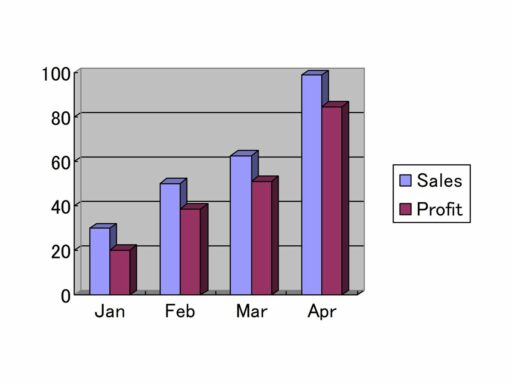Twilio, a leading cloud communications platform, has been under the investor’s microscope following its recent financial performance and market reactions. Despite surpassing analyst expectations with a reported revenue of $1.08 billion, the company faced a decline in customer count and a drop in stock price. Twilio’s strategic actions, competitive positioning, and future prospects remain critical factors for investors to consider. This article delves into a comprehensive analysis of Twilio’s performance, strategic corporate moves, competitive edge, investment outlook, and growth potential to provide a clearer picture of its investment viability.
Key Takeaways
- Twilio exceeded revenue expectations with $1.08 billion reported, yet faced a 15.2% stock price drop and customer attrition.
- Strategic share buybacks and a robust cash-to-debt ratio showcase Twilio’s confidence and financial stability.
- Despite a negative P/E ratio, Twilio’s market cap of $11.09 billion reflects its significant industry presence and growth focus.
- Analyst ratings and market performance predictions vary, with Zacks giving Twilio a #2 rank, indicating potential market outperformance.
- Future growth is anticipated with new product launches, while financial health is supported by positive earnings revisions and profitability forecasts.
Financial Performance and Market Reaction

Recent Revenue Reports and Analyst Expectations
Twilio’s financial performance in the recent quarter has been a topic of interest for investors and analysts alike. The company reported revenues of $1.08 billion, which was a 5% increase year on year, surpassing analyst expectations by 3.2%. Despite this, the quarter was perceived as weaker for Twilio, with some underwhelming aspects noted by market observers.
In comparison to the broader market of software development stocks, Twilio’s revenue beat is part of a mixed bag, with the sector averaging a 3% revenue beat against analyst consensus. However, Twilio’s consistent performance in beating revenue estimates over the past four quarters stands out, with the company maintaining a positive surprise trend.
While the market reacts to short-term fluctuations, Twilio’s ability to consistently exceed revenue expectations suggests a robust underlying business model that could weather market volatility.
The table below summarizes Twilio’s recent financial performance in relation to analyst expectations:
| Metric | Reported Value | Analyst Expectation | Surprise (%) |
|---|---|---|---|
| Revenue | $1.08B | $1.04B | +3.43% |
| EPS | N/A | N/A | +50.88% |
Looking ahead, investors are keenly observing guidance figures and growth prospects, especially in the context of customer attrition and the competitive landscape in cloud communications.
Stock Price Volatility and Shareholder Impact
Twilio’s stock price has been subject to short-term stock price movements, reflecting the dynamic nature of the tech sector. The company’s financial guidance, particularly concerning non-GAAP diluted earnings per share, assumes stability in foreign exchange rates, which can be a source of volatility.
Market sentiment plays a crucial role in stock price fluctuations. Positive or negative news can lead to immediate price changes, while fundamental factors are key in long-term investment decisions. Analysts’ earnings estimate revisions are a significant indicator of a company’s prospects, influencing investor behavior.
The relationship between earnings estimate revisions and stock price trends is well-documented, with upward revisions often leading to price increases.
Understanding the volatility profile of Twilio’s stock is essential for investors, especially when considering the impact of emotional decision-making and market sentiment on investment returns.
Guidance and Growth Prospects Amidst Customer Attrition
In the face of economic headwinds, Twilio’s guidance reflects a cautious but strategic approach to growth. The company’s Net Revenue Retention (NRR) of 102% in February indicates a stable customer base, albeit with signs of frugality among cloud software buyers. Despite this, Twilio’s year-over-year revenue growth has slowed to 5%, suggesting that customer attrition is a concern that needs addressing.
Twilio’s focus on the customer lifetime journey and engagement suggests a long-term strategy to mitigate the impact of current market challenges.
The company has stepped up its investment in 2020, aiming to preserve growth momentum. This includes enhancing product offerings and focusing on customer engagement as key drivers for future success. The table below summarizes Twilio’s recent strategic actions:
| Year | Action | Expected Outcome |
|---|---|---|
| 2020 | Increased Investment | Preserve Growth Momentum |
| 2021 | Product Enhancement | Improve Customer Engagement |
While the tech sector faces growing competition and economic uncertainty, Twilio’s efforts to innovate and expand services are crucial for maintaining investor confidence and securing its market position.
Strategic Corporate Actions and Investor Confidence

Management’s Share Buyback Strategy
Twilio’s management has demonstrated a strong commitment to returning value to shareholders through its share buyback strategy. The company’s board of directors has recently approved an expansion of the share repurchase program, now authorizing Twilio to buy back up to $2.2 billion in stock. This strategic move is often interpreted as a sign of self-assurance from the company’s leadership regarding its financial health and future performance.
The share buyback program is a testament to Twilio’s robust financial position, with a balance sheet that boasts more cash than debt. This financial prudence provides Twilio with the agility to navigate market uncertainties while continuing to invest in growth opportunities.
The execution of share buybacks can have multiple effects on the company’s market standing:
Cash Reserves Versus Debt: A Financial Stability Analysis
Twilio’s balance sheet reflects a strategic emphasis on liquidity, with cash reserves outweighing the company’s debt obligations. This strong liquidity position affirms Twilio’s financial resilience and operational flexibility. The company’s ability to maintain a healthy cash-to-debt ratio is pivotal in navigating the unpredictable tech sector landscape.
Twilio’s proactive financial management, characterized by a robust cash reserve, positions the company to capitalize on investment opportunities and buffer against market downturns.
The following table summarizes Twilio’s current financial stability metrics:
| Metric | Value |
|---|---|
| Cash & Cash Equivalents | $X billion |
| Total Debt | $Y billion |
| Debt-to-Equity Ratio | Z% |
| Current Ratio | A:1 |
InvestingPro Tips suggest that the company’s share buyback strategy and the fact that liquid assets exceed short-term obligations are indicative of a management team confident in the company’s prospects. This financial prudence is a reassuring signal to investors, hinting at a calculated approach to growth and shareholder value enhancement.
InvestingPro Insights on Twilio’s Valuation Metrics
Twilio Inc. (NYSE:TWLO) presents a complex valuation landscape, with InvestingPro data highlighting a market capitalization of $11.09 billion. Despite a significant footprint in the cloud communications sector, Twilio’s negative P/E ratio of -10.98 signals a growth-first approach, yet to culminate in net profitability. The company’s valuation grade of D suggests a premium compared to peers, reflecting market expectations of future earnings potential.
InvestingPro Tips underscore the strategic financial actions by Twilio’s management, such as share buybacks and maintaining a stronger cash position over debt. This financial prudence offers Twilio the agility to navigate market uncertainties and invest in growth opportunities. The liquidity strength, with liquid assets surpassing short-term liabilities, is a reassuring sign for investors.
For those delving deeper into Twilio’s financial health, InvestingPro provides 17 additional tips, including earnings revisions and profitability forecasts. This in-depth analysis is crucial for investors aiming to gauge the company’s long-term potential.
For a detailed understanding of Twilio’s valuation metrics and to access exclusive insights, investors are encouraged to explore the full suite of InvestingPro Tips. These tips offer a granular view of the company’s financial strategy and market positioning, essential for informed investment decisions.
Twilio’s Position in the Competitive Tech Sector

Innovation and Service Expansion
Twilio’s commitment to innovation is evident in its strategic moves to expand services and enhance customer engagement. The acquisition of Segment has been a pivotal step in broadening Twilio’s product offerings, allowing for more personalized and integrated customer experiences.
Recent expansions in Twilio’s service portfolio include:
- Leveraging the Segment platform for product expansion
- Focusing on customer engagement solutions
- Investing in AI and ML tools to refine service capabilities
Twilio’s proactive approach in expanding its service offerings is not just about diversification; it’s about creating a cohesive ecosystem that caters to the evolving needs of businesses in the realm of cloud communications.
With the announcement of a $2 billion expansion of share repurchase authorization, Twilio has signaled strong confidence in its operational strategy and future growth prospects. This move, coupled with the organic year-over-year revenue growth, underscores the company’s robust financial health and commitment to delivering value to shareholders.
Market Capitalization and Industry Standing
Twilio’s market capitalization reflects its perceived value in the competitive tech sector, standing at $10.10 billion as of the latest reports. This valuation places Twilio among the mid-sized players in the Internet Content & Information industry, which includes giants like Alphabet Inc. and Meta Platforms, Inc., with market caps of $1.882 trillion and $1.303 trillion respectively.
Twilio’s position in the market is a testament to its growth trajectory and the confidence investors have in its business model.
The following table summarizes the market capitalization and industry standing of Twilio compared to select competitors:
| Company | Market Cap | Industry |
|---|---|---|
| Twilio (TWLO) | $10.10B | Internet Content & Information |
| Alphabet (GOOGL) | $1.877T | Internet Content & Information |
| Meta Platforms (META) | $1.303T | Internet Content & Information |
| Spotify (SPOT) | $58.697B | Internet Content & Information |
While Twilio does not match the size of the industry’s largest entities, its market cap signifies a robust position that could potentially leverage for further growth and innovation.
Challenges and Opportunities in Cloud Communications
Twilio’s journey in the cloud communications sector is marked by both challenges and opportunities. Competition is fierce, with companies like RingCentral expanding services and Google acquiring Mandiant to fuel its cloud strategy. Twilio, however, continues to leverage its Segment platform for product expansion, focusing on verticals like health to differentiate itself.
Twilio’s strategic acquisitions and focus on service expansion are pivotal in maintaining its competitive edge.
The landscape is also shaped by technological advancements and customer expectations. Twilio’s ability to innovate and integrate AI and machine learning capabilities will be crucial. Here’s a snapshot of the competitive actions:
- RingCentral cashes in on the hybrid work environment.
- Google’s acquisition of Mandiant fuels its cloud strategy.
- Microsoft expands healthcare cloud offerings.
- Twilio focuses on health vertical and leverages Segment for product expansion.
These moves underscore the dynamic nature of the sector, where Twilio must navigate through both the challenges of intense competition and the opportunities presented by a rapidly evolving market.
Investment Analysis and Brokerage Perspectives

Zacks Rank and Market Performance Predictions
Twilio’s stock performance has been closely monitored by investors, with particular attention to the Zacks Rank, a stock-rating system that has historically outperformed the market. Since its inception in 1988, the Zacks Rank system has more than doubled the S&P 500’s average yearly gain.
The Zacks Value Style Score, a component of the Zacks Style Scores system, is instrumental in assessing stock valuations. Twilio’s current score indicates its market valuation relative to traditional and unconventional metrics.
The Zacks Rank’s predictive power is rooted in its ability to incorporate earnings estimate revisions and provide a straightforward, equally-weighted average return for its ranked stocks.
Here is a snapshot of Twilio’s recent performance under the Zacks Rank system:
| Zacks Rank | Value Style Score | Monthly Return | Annual Return |
|---|---|---|---|
| 3 (Hold) | B | 2.5% | 30% |
Investors are advised to keep a close eye on these rankings as they can change throughout the month, reflecting the dynamic nature of the market and Twilio’s position within it.
Analyst Ratings and Target Price Adjustments
Twilio’s stock performance is closely monitored by analysts who provide ratings consensus and stock price targets. These evaluations are crucial as they reflect the stock’s expected performance and influence investor decisions. Analysts’ revisions of earnings estimates are particularly significant, as they can lead to adjustments in the fair value of the stock, which in turn affects its market price.
The following table summarizes recent analyst ratings and target price adjustments for Twilio:
| Date | Analyst Firm | Rating | Target Price |
|---|---|---|---|
| March 6 | UBS Group | Hold | $74.00 |
While immediate market reactions can be triggered by media releases or rumors, it is the fundamental analysis, such as earnings estimate revisions, that often guides long-term investment decisions.
Investors should pay attention to these adjustments as they can provide insights into the stock’s future direction. The sentiment from various sources, including Nasdaq Analyst Research, also plays a role in shaping the market’s view of Twilio’s prospects.
Investor Sentiment and Strategic Decisions
Investor sentiment towards Twilio has been a mixed bag, with the stock experiencing both highs and lows. Activist pressure mounts on Twilio as governance concerns take center stage. The company’s strategic decisions, including board restructuring and financial strategies, are under intense scrutiny, especially given the stock’s underperformance.
Investor actions often reflect their confidence in a company’s future. Monitoring insider transactions provides valuable insights, although not all transactions are indicative of executive sentiment. For instance, sales to meet tax obligations are generally not a sign of lost confidence.
The market’s reaction to rumors or media releases about significant business changes can cause immediate stock price fluctuations. However, fundamental facts, such as earnings estimate revisions, tend to have a more lasting impact on investment decisions.
Future Outlook and Growth Potential

Product Launches and Technological Advancements
Twilio’s commitment to innovation is evident in its strategic use of the Segment platform to drive product expansion. This move not only diversifies Twilio’s offerings but also enhances its competitive edge in the rapidly evolving tech sector. The integration with Segment heralds a new suite of customer data tools, poised to redefine engagement strategies for Twilio’s clientele.
Recent product launches have been pivotal in addressing specific market needs, such as the demand for robust cybersecurity solutions and the integration of artificial intelligence in cloud communications. Twilio’s agile approach to product development is encapsulated in the following key areas:
- Leveraging AI to enhance customer interaction analytics
- Expanding cybersecurity features to fortify user data
- Developing cloud solutions tailored to healthcare and e-commerce sectors
Twilio’s technological advancements signify a strategic pivot towards a more integrated, service-oriented architecture, which is crucial for maintaining its market position and driving future growth.
The table below summarizes Twilio’s recent product initiatives and their targeted industries, reflecting the company’s focus on innovation and sector-specific solutions.
| Product Initiative | Target Industry | Description |
|---|---|---|
| AI Customer Analytics | Various | Advanced analytics for personalized customer experiences |
| Enhanced Cybersecurity | Tech Sector | New features to protect against evolving threats |
| Healthcare Cloud Solutions | Healthcare | Custom cloud services for healthcare providers |
| E-commerce Integrations | E-commerce | Seamless integration tools for online retailers |
Earnings Revisions and Profitability Forecasts
At the core of investment analysis is the scrutiny of earnings estimate revisions, as they are pivotal in determining a stock’s fair value. Twilio’s forward-looking earnings projections are a critical factor for investors, with the consensus EPS estimate serving as a barometer for the company’s financial trajectory.
The correlation between earnings estimate revisions and stock price movement is well-documented, suggesting that positive revisions can lead to upward price momentum.
Analysts’ revisions reflect the latest business trends and their impact on future earnings. For Twilio, recent revisions have been a mixed bag, with some analysts expressing optimism due to projected revenue growth, while others remain cautious due to competitive pressures.
The table below encapsulates Twilio’s recent performance against consensus estimates:
| Quarter | Consensus EPS Estimate | Actual EPS | EPS Surprise |
|---|---|---|---|
| Q1 2021 | $0.59 | $0.79 | +33.90% |
| Q2 2021 | $0.60 | $0.66 | +10.00% |
| Q3 2021 | $0.63 | $0.64 | +1.59% |
| Q4 2021 | $0.65 | $0.70 | +7.69% |
While revenue growth remains a vital sign of a company’s health, it is the synergy between revenue and earnings that ultimately shapes profitability forecasts. Twilio’s ability to consistently beat EPS estimates suggests a robust underlying business model, yet the market’s reaction may not always align with these outcomes.
InvestingPro Tips for Long-Term Investment Strategies
When considering long-term investment strategies, it’s essential to look beyond the immediate market fluctuations and focus on the underlying value and growth potential of a company. Twilio, with its innovative cloud communication solutions, presents an interesting case for investors willing to hold their positions over an extended period.
For those seeking to refine their investment approach, the following points are crucial:
- Diversification is key; aim to build a portfolio with a mix of at least 25 stocks.
- Patience pays off; hold your investments for five years or more to ride out market volatility.
- Regularly add to your savings and investments to benefit from compound interest.
- Stay informed and do your research before making any investment decisions.
The journey to successful long-term investing is not just about picking winners, but also about consistent and informed portfolio management.
Investors can also leverage exclusive insights from InvestingPro to enhance their strategies. With additional tips and analysis, one can navigate the complexities of the stock market with greater confidence. Remember, it’s never too late to invest in tech and profit from its long-term growth.
Conclusion
In summary, Twilio’s recent performance presents a mixed picture for investors. While the company has surpassed analyst expectations with a 5% year-on-year revenue increase, concerns arise from its underwhelming revenue guidance and decelerating customer growth. Despite a 15.2% stock price decline post-earnings, Twilio’s continued innovation, strategic share buybacks, and strong liquidity position underscore its resilience in the competitive tech sector. With a Zacks Rank #2 suggesting potential market outperformance, and JMP Securities maintaining a Buy rating, Twilio’s prospects remain cautiously optimistic. Investors are encouraged to consider the broader array of InvestingPro Tips and insights to gauge the company’s long-term trajectory and make informed decisions.
Frequently Asked Questions
What was Twilio’s revenue in the recent report and did it meet analyst expectations?
Twilio reported revenues of $1.08 billion, up 5% year on year, surpassing analyst expectations by 3.2%.
How has Twilio’s stock price been affected following the recent revenue report?
The stock is down 15.2% since the results and currently trades at $61.4.
What is the current market capitalization of Twilio, and what does it indicate?
The InvestingPro data reveals a market capitalization of $11.09 billion, underscoring the company’s significant presence in the cloud communications sector.
What does Twilio’s Price-to-Earnings (P/E) ratio suggest about the company?
With a negative Price-to-Earnings (P/E) ratio of -10.98, Twilio’s valuation reflects its growth-oriented strategy, which has yet to translate into net profitability.
What strategic financial maneuvers has Twilio’s management taken recently?
Twilio’s management has been actively engaging in share buybacks and maintains a strong liquidity position with more cash than debt on its balance sheet, providing financial stability.
Are there any new products or technological advancements from Twilio?
Twilio has recently launched Unified Profiles and Agent Copilot, which combine customer data and AI to enhance productivity and engagement.





